CELIA CRUZ
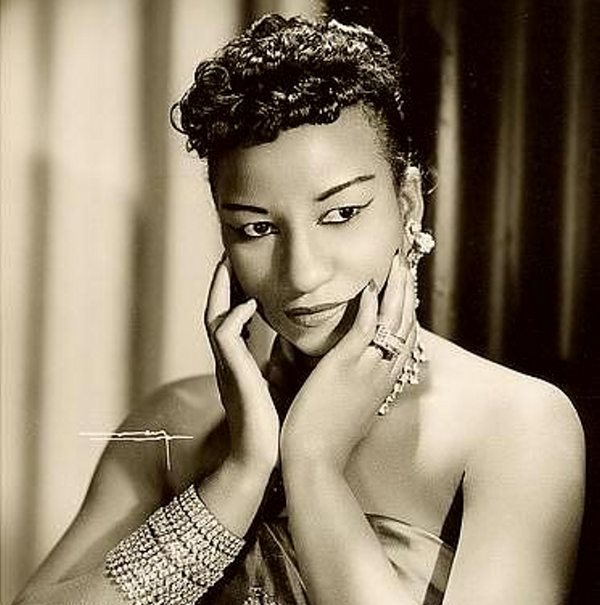
Releases
 Cantantes de la Matancera, La Sonora Matancera
Cantantes de la Matancera, La Sonora Matancera Reinas de la Canción Cubana
Reinas de la Canción Cubana Celia Cruz vs Pio Leyva
Celia Cruz vs Pio Leyva Celia Cruz, Celia Cruz
Celia Cruz, Celia Cruz Sandunguéate, Celia Cruz
Sandunguéate, Celia Cruz Celia Cruz Sings, Celia Cruz
Celia Cruz Sings, Celia Cruz Celia Cruz Y Nelson Pinedo
Celia Cruz Y Nelson Pinedo Celia Cruz, Celia Cruz
Celia Cruz, Celia Cruz 100 Cubanos de los 50
100 Cubanos de los 50 Santería y Ritos Afrocubanos, Various Artists
Santería y Ritos Afrocubanos, Various Artists 50 Hits de la Vieja Radio Cubana Vol. 11
50 Hits de la Vieja Radio Cubana Vol. 11 50 Hits de la Vieja Radio Cubana Vol. 10
50 Hits de la Vieja Radio Cubana Vol. 10 50 Hits de la Vieja Radio Cubana Vol. 9
50 Hits de la Vieja Radio Cubana Vol. 9 50 Hits de la Vieja Radio Cubana Vol. 8
50 Hits de la Vieja Radio Cubana Vol. 8 50 Hits de la Vieja Radio Cubana Vol. 7
50 Hits de la Vieja Radio Cubana Vol. 7 50 Hits de la Vieja Radio Cubana Vol. 6
50 Hits de la Vieja Radio Cubana Vol. 6 50 Hits de la Vieja Radio Cubana Vol. 5
50 Hits de la Vieja Radio Cubana Vol. 5 50 Hits de la Vieja Radio Cubana Vol. 4
50 Hits de la Vieja Radio Cubana Vol. 4 50 Hits de la Vieja Radio Cubana Vol. 3
50 Hits de la Vieja Radio Cubana Vol. 3 50 Hits de la Vieja Radio Cubana Vol. 2
50 Hits de la Vieja Radio Cubana Vol. 2 Son de Cuba
Son de Cuba Caribe Vintage Lounge, Various Artists
Caribe Vintage Lounge, Various Artists Salsa Caribe 100 Rumbas, Merengues, Guarachas, Mambos...
Salsa Caribe 100 Rumbas, Merengues, Guarachas, Mambos... Música Cubana. 200 Canciones
Música Cubana. 200 Canciones 50 Canciones de la Vieja Radio Cubana
50 Canciones de la Vieja Radio Cubana Vintage Cuba Lounge
Vintage Cuba Lounge 100 Boleros a Mis Padres
100 Boleros a Mis Padres La Auténtica Salsa Con Merengue, 100 Canciones
La Auténtica Salsa Con Merengue, 100 Canciones Rumba De Mi Cuba
Rumba De Mi Cuba 108 Songs Vintage Music Jukebox
108 Songs Vintage Music Jukebox 100 Songs for Vintage Ambient
100 Songs for Vintage Ambient La Sonora Radio Latina Vol. 3
La Sonora Radio Latina Vol. 3 La Sonora Radio Latina Vol. 1
La Sonora Radio Latina Vol. 1 La Sonora Radio Latina Vol. 5
La Sonora Radio Latina Vol. 5 La Sonora Radio Latina Vol. 4
La Sonora Radio Latina Vol. 4 La Sonora Radio Latina Vol. 2
La Sonora Radio Latina Vol. 2 100 Latinos VIP Vintage Music
100 Latinos VIP Vintage Music Vintage Cuba Selection
Vintage Cuba Selection
Videos
Biography
Her big break came when she became the lead vocalist for Sonora Matancera, the prominent tropical band of its day. She was not a hit, but the band’s leader, Rogelio Martinez, remained firm in his belief in Cruz, even after record executives complained that a woman singing that style of music was not going to sell.
Over time, the Cruz and the subsequent CD became a big success and she toured with the band through the 1950s.
In 1959, Sonora Matancera, along with Cruz, went on tour to Mexico. Castro was now in power following the Cuban revolution and the musicians, rather than returning to Havana, went to the U.S. Cruz became a U.S. citizen in 1961 and, the following year, she married Pedro Knight who a trumpeter with the band.
In 1965, both Cruz and Knight left the band to branch out on their own. Since Cruz’ solo career was blossoming while Knight’s was languishing, he stopped performing to become her manager.
In 1966, Cruz and Tito Puente began performing together for Tico records, recording eight albums for the label. A few years later, Cruz performed in Hommy, the Hispanic version of the Who’s rock opera Tommy. Her fame was starting to spread in the musical community and it was during this time that she signed with Fania, a new label that was destined to become the most famous salsa label of all time.
During the 1980s, the public’s appetite for salsa started to die down, but Cruz kept busy with tours of Latin America, television appearances and some cameo roles in cinema. In 1987 she received her own star on Hollywood’s “Walk of Fame”, just one of the many cities worldwide that boasts a star with Celia Cruz’ name on it.
The 1990s found Celia Cruz in her late 60s and 70s. Rather than starting to wind down her career, it seems that this was the decade that the ever energetic Cruz reaped some of the most satisfying rewards of a brilliant musical life.
These awards included a lifetime achievement awards from both the Smithsonian and the Hispanic Heritage Organization, a street named after her in Miami’s Calle Ocho district as well as the distinction of San Francisco declaring October 25th, 1997 as Celia Cruz Day. She went to the White House and received the National Medal of Arts from President Clinton.
Celia Cruz was full of life and music, achieving far more than she ever dreamed of as a young girl in Santos Suarez. Despite all the fame and accolades, she remained warm, friendly and down-to-earth.
In fact, the only big dream she was not able to achieve was a return to her native Cuba.
Fuente: http://latinmusic.about.com



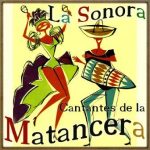 Cantantes de la Matancera, La Sonora Matancera
Cantantes de la Matancera, La Sonora Matancera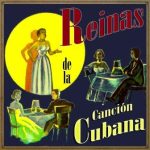 Reinas de la Canción Cubana
Reinas de la Canción Cubana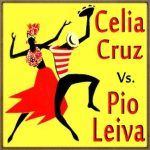 Celia Cruz vs Pio Leyva
Celia Cruz vs Pio Leyva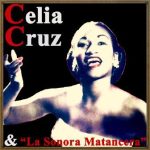 Celia Cruz, Celia Cruz
Celia Cruz, Celia Cruz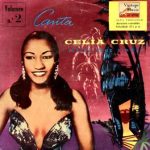 Sandunguéate, Celia Cruz
Sandunguéate, Celia Cruz Celia Cruz Sings, Celia Cruz
Celia Cruz Sings, Celia Cruz Celia Cruz Y Nelson Pinedo
Celia Cruz Y Nelson Pinedo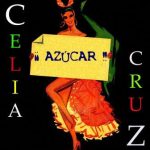 Celia Cruz, Celia Cruz
Celia Cruz, Celia Cruz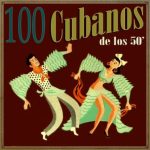 100 Cubanos de los 50
100 Cubanos de los 50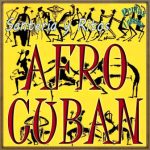 Santería y Ritos Afrocubanos, Various Artists
Santería y Ritos Afrocubanos, Various Artists 50 Hits de la Vieja Radio Cubana Vol. 11
50 Hits de la Vieja Radio Cubana Vol. 11 50 Hits de la Vieja Radio Cubana Vol. 10
50 Hits de la Vieja Radio Cubana Vol. 10 50 Hits de la Vieja Radio Cubana Vol. 9
50 Hits de la Vieja Radio Cubana Vol. 9 50 Hits de la Vieja Radio Cubana Vol. 8
50 Hits de la Vieja Radio Cubana Vol. 8 50 Hits de la Vieja Radio Cubana Vol. 7
50 Hits de la Vieja Radio Cubana Vol. 7 50 Hits de la Vieja Radio Cubana Vol. 6
50 Hits de la Vieja Radio Cubana Vol. 6 50 Hits de la Vieja Radio Cubana Vol. 5
50 Hits de la Vieja Radio Cubana Vol. 5 50 Hits de la Vieja Radio Cubana Vol. 4
50 Hits de la Vieja Radio Cubana Vol. 4 50 Hits de la Vieja Radio Cubana Vol. 3
50 Hits de la Vieja Radio Cubana Vol. 3 50 Hits de la Vieja Radio Cubana Vol. 2
50 Hits de la Vieja Radio Cubana Vol. 2 Son de Cuba
Son de Cuba Caribe Vintage Lounge, Various Artists
Caribe Vintage Lounge, Various Artists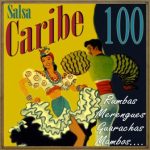 Salsa Caribe 100 Rumbas, Merengues, Guarachas, Mambos...
Salsa Caribe 100 Rumbas, Merengues, Guarachas, Mambos...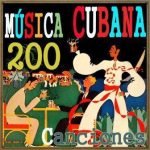 Música Cubana. 200 Canciones
Música Cubana. 200 Canciones 50 Canciones de la Vieja Radio Cubana
50 Canciones de la Vieja Radio Cubana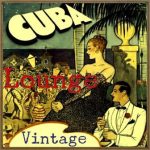 Vintage Cuba Lounge
Vintage Cuba Lounge 100 Boleros a Mis Padres
100 Boleros a Mis Padres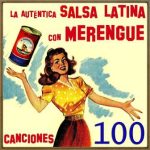 La Auténtica Salsa Con Merengue, 100 Canciones
La Auténtica Salsa Con Merengue, 100 Canciones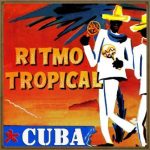 Rumba De Mi Cuba
Rumba De Mi Cuba 108 Songs Vintage Music Jukebox
108 Songs Vintage Music Jukebox 100 Songs for Vintage Ambient
100 Songs for Vintage Ambient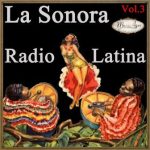 La Sonora Radio Latina Vol. 3
La Sonora Radio Latina Vol. 3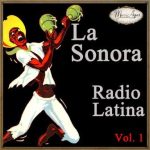 La Sonora Radio Latina Vol. 1
La Sonora Radio Latina Vol. 1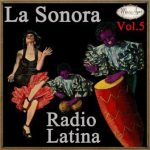 La Sonora Radio Latina Vol. 5
La Sonora Radio Latina Vol. 5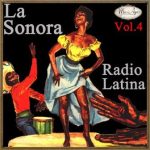 La Sonora Radio Latina Vol. 4
La Sonora Radio Latina Vol. 4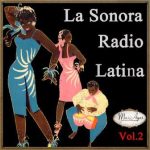 La Sonora Radio Latina Vol. 2
La Sonora Radio Latina Vol. 2 100 Latinos VIP Vintage Music
100 Latinos VIP Vintage Music Vintage Cuba Selection
Vintage Cuba Selection



